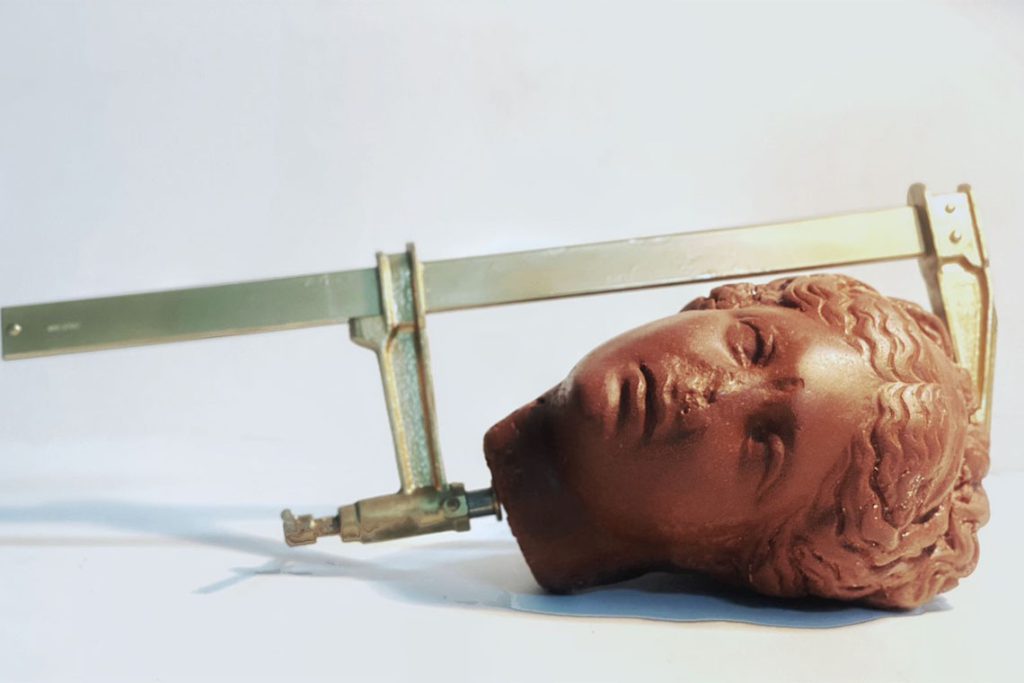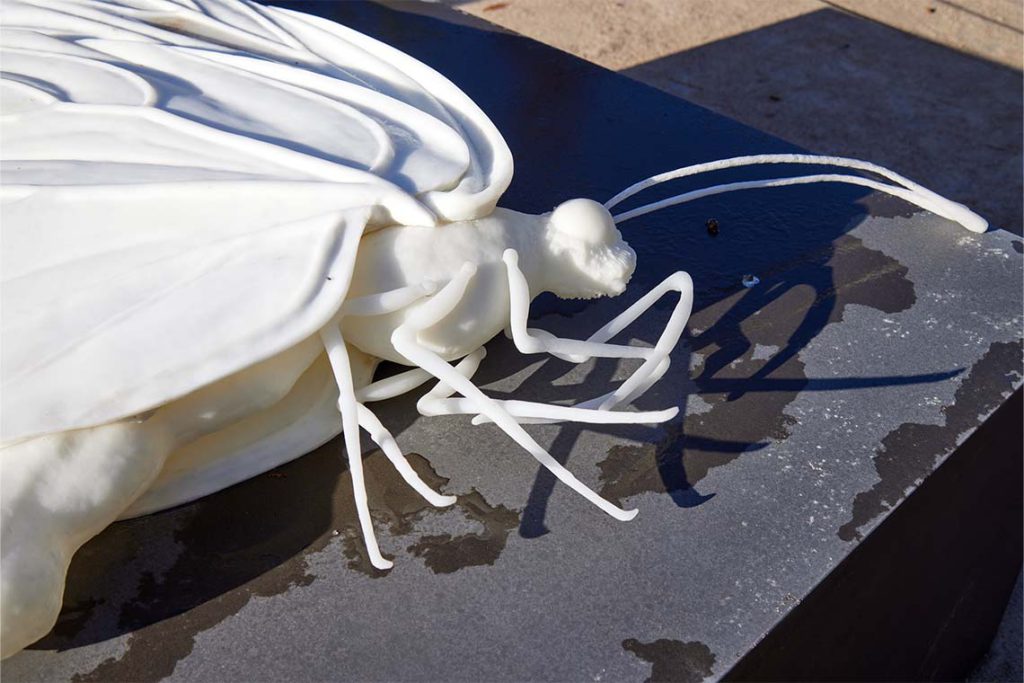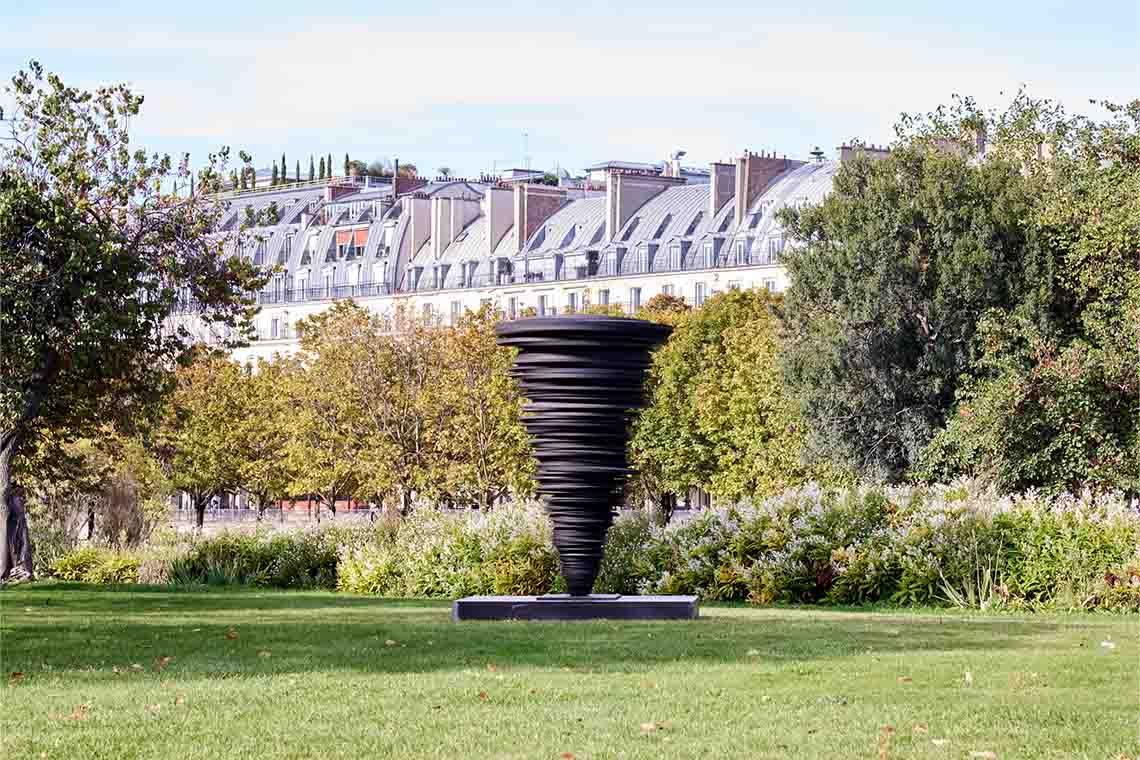As the latest edition of Paris+ Par Art Basel opens in the French capital, it’s time for some hard thinking and listening in terms of the Middle Eastern presence.
Arab voices often struggle to be heard, but here in Paris, within the context of Paris+ par Art Basel, the circumstances are particularly strained by the crisis in the Middle East and the security concerns that have snowballed away from it. Art does not speak with a single voice; it is multivocal and each viewer brings along their own preoccupations and preconceptions, as well as dreams and desires. Beyond this, context also speaks. So, how will the current but not unique crisis affect the way in which these ‘voices’ are received?
It is important to bear in mind that the choice of work on display at the fair this week predates current events, but nevertheless no MENA artist can have failed to be affected, even if indirectly, by the ongoing conflict. This does not mean that art has to respond directly to military conflict, because it may respond in diffuse and decentred ways. There is a long history, for example, of protests made against authoritarian governments through hidden signs and symbols, decipherable only by those in the know. On the other hand, responses may be fragmented through personal and highly subjective experiences. With figures from the MENA region represented across the fair’s programming, it’s interesting to see how realities and reflections are being interpreted in these peculiar circumstances.
This year, as it returns for its second edition, Paris+ has found a temporary home – the Grand Palais Éphémère – overlooking the Eiffel Tower. In a sign of the times, the surroundings are fortified with anti-ram barriers and the throngs of attendees on the VIP days were subjected to heightened security checks. Paris, as a continuously evolving global cultural centre, has increasingly embraced international galleries and artists in recent years. This dynamism is reflected in the offerings at the Fair; 154 galleries hailing from 33 countries and territories, presented the works of artists spanning from 20th-century masters to emerging talents that include some from the MENA region.
At this time art can speak in a city where protest is part of street life and has regularly been met with suppression by the authorities. Against this backdrop, some gallerists have taken the fair as an opportunity to foreground lesser-known experiences. In the main Galeries sector, Selma Feriani Gallery (Tunis, London) is showcasing artists from North Africa: Massinissa Selmani (Algeria), Malek Gnaoui (Tunisia) and Zineb Sedira (Algeria); as well as Pascal Hachem (Lebanon) and Maha Malluh (KSA). Feriani committed her curation to the contemporary concerns of the Arab world with works produced across disciplines that concentrated on themes of colonisation, the erasure of histories and the proliferation of religious discourse in the Gulf.

Reflecting upon life in a former French colony, Lebanese visual artist Pascal Hachem raised the question: ‘If one loses their land do they lose themselves?’. His contorted metal garden tools, hanging from the wall, suggest that the artist’s own land cannot be cultivated. On the floor, the head of Aphrodite lay, compressed in the grip of a golden clamp. The sculpture is part of Malek Gnaoui’s Broken series, work which attempts to remember hidden or disappeared aspects of history. Gnaoui’s vision of compression symbolises the silencing of intellectuals in Tunisia and the restriction of individual freedoms. This is particularly telling in the context of a nation that has lauded itself as the champion of liberté, égalité, fraternité – yet how do these sentiments resound in the context of a post-colonial France? On the back wall of the booth, a new work by Riyadh-based artist Maha Malluh dominates the space. The large-scale installation, entitled Food for Thought, “Nur wa Thulumat” (2023), looks back to a decade marked by a fundamental reaction to fast-paced Westernisation in Saudi Arabia. Her piece, composed of 891 pastel-hued cassette tapes, holds recordings of religious rhetoric promoting a rigid interpretation of Islam during the 1980s.
Concerns with the presentation and preservation of minority experiences continues in the Galeries Émergentes sector, where Marfa’ (Beirut) is presenting an evocative solo exhibition by Lebanese artist Mohamad Abdouni. His large-format prints accompanied by a film grants wider access to previously unseen archives that document the experiences and oral histories of Lebanon’s subliminals during the 1980s, 1990s and post-war period. Here art converges with documentary film while raising issues of how we interpret and embrace the past, as well as the role of memory and remembering in artistic vision.
Outside the fair, in the Jardin des Tuileries, there is more optimism. As part of the Paris+ public programme, the historic site has been transformed into a sculpture garden curated for the second year by Annabelle Ténèze, incoming Director of the Louvre-Lens Museum, in collaboration with the Musée du Louvre. The exhibition, La Cinquième Saison (‘The Fifth Season’) has rendered the Jardin des Tuileries into a space of mineral, aquatic, vegetal, animal and human activity and cohabitation, a theme echoed in the large-scale works of 26 artists from different generations worldwide, whose artworks appear to be imbued with ‘natural’ life.

Moroccan artist Meriem Bennani’s kinetic sculpture, Windy (2022), originally displayed on the High Line in New York City, was commissioned by High Line Art and Audemars Piguet Contemporary. Her sculpture consists of motorised foam discs that whirl round erratically, resembling a cartoon tornado that blurs the lines between animation and movement, the two-dimensional and real worlds. Contrasting with this mechanistic and kinetic vision are works by two artists of Tunisian heritage, Alex Ayed and Nicène Kossentini (presented by Selma Feriani Gallery). Perched in the centre of the pathway, Ayed’s new olive wood and clay sculpture, Untitled (Beit el hmam I) (2023), resembles a sandy hued dovecote. The artist considers the enclosure as a space where different narratives and local histories converge and a physical reminder of the animals that populate and contribute to our cities. Close by, Kossentini’s sculpture, The Butterfly (2014), made of fragile fibreglass and delicate Japanese fabric, captures the ephemeral poetry of storytelling, dance and the movement of a butterfly’s wings. Kossentini’s monarch butterfly, positioned lying down, evokes ideas that capture today’s pressing concerns – the dream of flying and the meaning of freedom.
It’s impossible to predict how these voices will be heard. Some are direct and relatively unambiguous in their meaning; others more subtle, indirect and haunting in their imagination. Nevertheless, the tragi-drama that haunts the Middle East spreads melancholy and invites hate and fury, as well as despair. The crisis has entered France through terrorism and haunts the outskirts of the fair in the form of a heightened police and security presence. Within the fair itself is work that demands careful consideration by an all-too-often Euro-centric audience, so may we all hope that what MENA artists have brought to Paris+ is being absorbed and that some real reflections are being generated that will transcend the present conjuncture.



